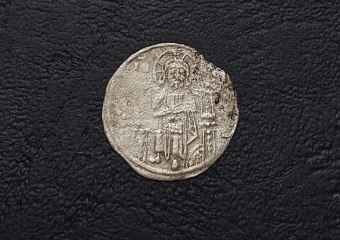A stone with inscription from Nero's reign will be shown for the first time in Aquae calidae
 Epigraphic monument from Emperor Nero marks a turning point in the earlier scientific hypothesis for the beginning of the construction of the Roman baths in Aquae calidae. Until recently, it was assumed that the thermal complex was built by Emperor Trajan in the 2nd century AD, as other Roman bath complexes in the region were built at that time. After the discovery and reading of the inscription on the stone, the lower chronological boundary of the existence of the complex changed to the beginning of the second half of the 1st century and is illustrated by Nero's inscription of a bath. According to Nikolai Sharankov, the beginning of Aquae calidae is dated between 60 and 68 AD. The researcher assumes that it is possible that the bath was built around 61 AD when Nero built roads and road stations in the province of Thrace. Archaeological studies led by archaeologist Prof. Dimcho Momchilov reveal several structures from the middle of the 1st century AD. Among them is a marble basin. Five Steps from its eastern end are located just outside the entrance of Suleiman's Bath - today's museum. The greater part of this facility remains under the foundations of the Turkish bath.
Epigraphic monument from Emperor Nero marks a turning point in the earlier scientific hypothesis for the beginning of the construction of the Roman baths in Aquae calidae. Until recently, it was assumed that the thermal complex was built by Emperor Trajan in the 2nd century AD, as other Roman bath complexes in the region were built at that time. After the discovery and reading of the inscription on the stone, the lower chronological boundary of the existence of the complex changed to the beginning of the second half of the 1st century and is illustrated by Nero's inscription of a bath. According to Nikolai Sharankov, the beginning of Aquae calidae is dated between 60 and 68 AD. The researcher assumes that it is possible that the bath was built around 61 AD when Nero built roads and road stations in the province of Thrace. Archaeological studies led by archaeologist Prof. Dimcho Momchilov reveal several structures from the middle of the 1st century AD. Among them is a marble basin. Five Steps from its eastern end are located just outside the entrance of Suleiman's Bath - today's museum. The greater part of this facility remains under the foundations of the Turkish bath.
The visitors of Aquae calidae Museum in November will be among the first to see the stone of Emperor Nero. So far, it has not been shown to a wide audience.
The Aquae calidae Museum will be open in November from 9:00 to 17:00 hours, no day off. The cost of visiting the museum is 4 BGN for a regular ticket, 2 BGN for students and pensioners and includes a 3D mapping projection.
The exposition is presented in partnership with the Regional historical museum of Burgas.


Comments
comments powered by Disqus